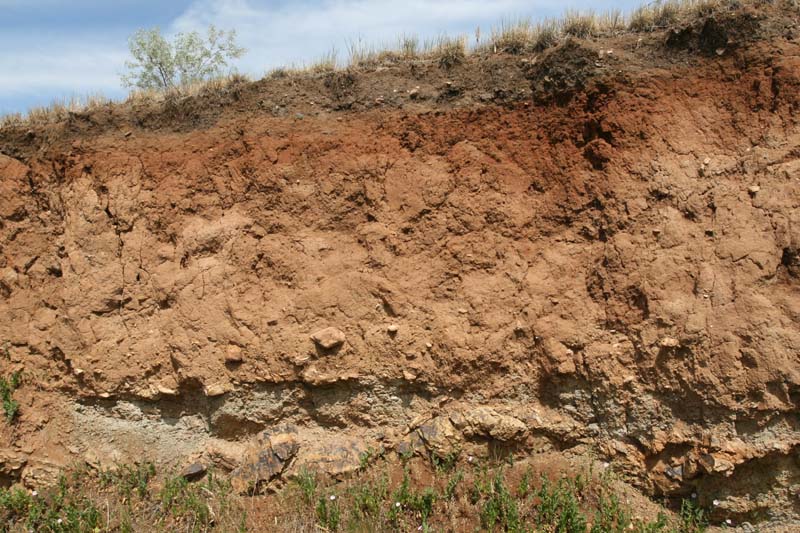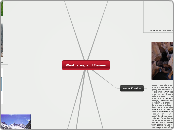Weathering and Erosion
Weathering
Mechanical Weathering
Mechanical weathering takes place when rocks are broken down without any change in the chemical nature of the rocks. The rocks are essentially torn apart by physical force, rather than by chemical breakdown.

Chemical Weathering
Chemical weathering takes place in almost all types of rocks. Smaller rocks are more susceptible, however, because they have a greater amount of surface area.

Rate at Which Rock Wheathers
The rocks will weather based on their hardness, softness and the environment. Soft rocks in a windy environment will weather faster than a harder density rock in the same environment.
Water Erosion

Water Erosion is what destroys houses and landscapes due to rain, which erodes the soil and causes things like rill, gulley and stream erosion. Moving water is the major agent of the erosion that has shaped Earth's land surface. As runoff travels, it forms tiny grooves in the soil called rills. A gully is a large groove or channel , in the soil that carries runoff after a rain storm. Through erosion, a river creates valleys, waterfalls, flood plains, meanders, and oxbow lakes. A stream is a channel along which water is continually flowing down a slope. A tributary is a stream or river that flows into a larger river. The flat, wide area of land along a river is a flood plain. an oxbow lake is a meander that has been cut off from the river. Deposition creates landforms such as alluvial fans and deltas. It can also add soil to a river’s flood plain. An alluvial fan is a wide, sloping deposit of sediment formed where a stream leaves a mountain range. Sediment deposited where a river flows into an ocean or lake builds up a landform called a delta. Groundwater is the term geologists use for this underground water. Groundwater can cause erosion through a process of chemical weathering. . A deposit that hangs like an icicle from the roof of a cave is known as a stalactite. Slow dripping builds up a cone-shaped stalagmite from the cave floor.
Waves
Waves are the major force of erosion along coasts. Two ways that waves erode land are impact and abrasion. Part of the shore that sticks out into the ocean because it is made of harder rock is called a headland. Three landforms created by wave erosion are beaches, sea sleck, and sandfloor. An area of wave-washed sediment along a coast is a beach. The process in which beach sediment is moved down the beach with the current is called long shore drift. Long shore drift deposits sand along the shore forms a spit.

Subtopic
Erosion and Deposition Cycle

Erosion is the process by which natural forces move weathered rock and soil from one place to another. The material moved by erosion is sediment. Deposition occurs where the agents of erosion, deposit, or lay down, sediment. Weathering, erosion, and deposition act together in a cycle that wears down and builds up Earth’s surface. Gravity is the force that moves rock and other materials downhill. Gravity causes mass movement, any one of several processes that move sediment downhill. The different types of mass movement include landslides, mudflows, slump, and creep. Mass movement can be rapid or slow. The most destructive kind of mass movement is a landslide, which occurs when rock and soil slide quickly down a steep slope. A mudflow is the rapid downhill movement of a mixture of water, rock, and soil. In the type of mass movement known as slump, a mass of rock and soil suddenly slips down a slope. Creep is the very slow downhill movement of rock and soil. It can even occur on gentle slopes.

creep

Slump

Mud Slide

Land SLide
Glaciers

Valley Glacier

Continental Glacier
Glaciers move very slowly over land and is the most effective type of erosion. They move very slowly on land growing and retreating leaving sediment behind and eroding the ground that it moves on a well as droping the sediment it picks up kn0own as till. Two ways Glaciers erode the ground are Plucking and Abrasion. Glaciers form where more snow falls than melts.
Wind
A sand dune is a deposit of wind-blown sand. Wind causes erosion by deflation and abrasion. Geologists define deflation as the process by which wind removes surface materials. Abrasion by wind-carried sand can polish rock, but it causes little erosion. Wind erosion and deposition may form sand dunes and loess deposits. This fine, wind-deposited sediment is loess.

